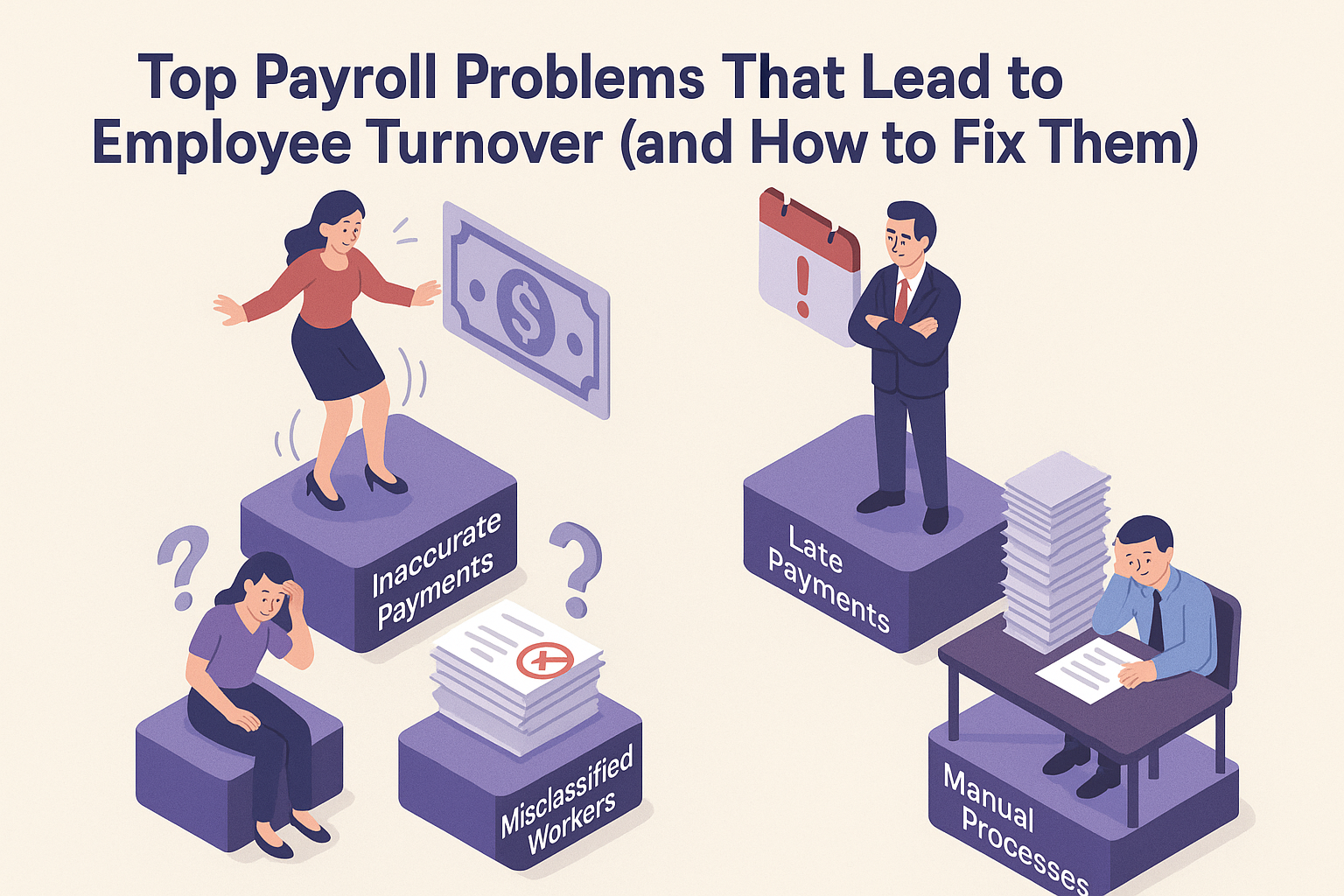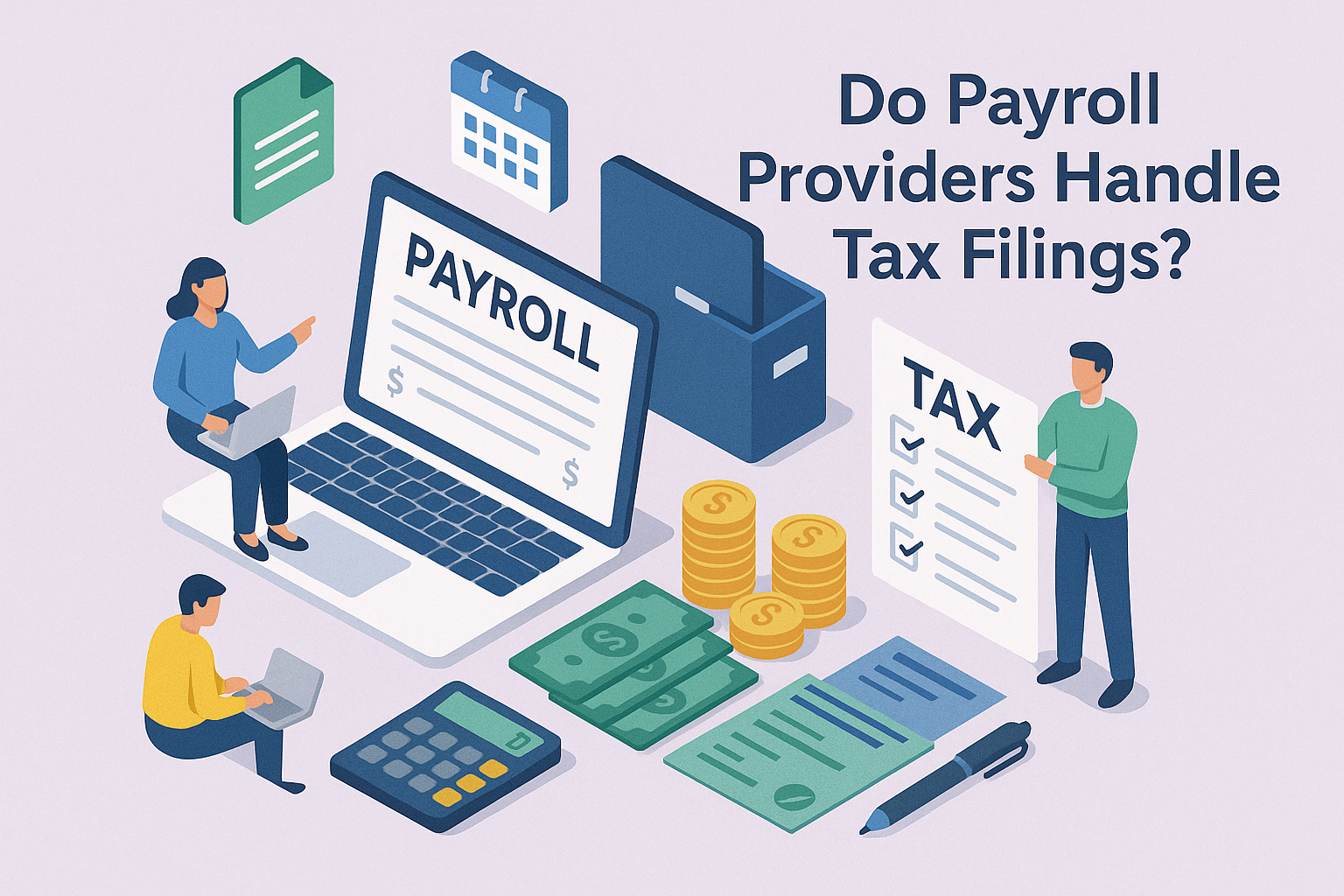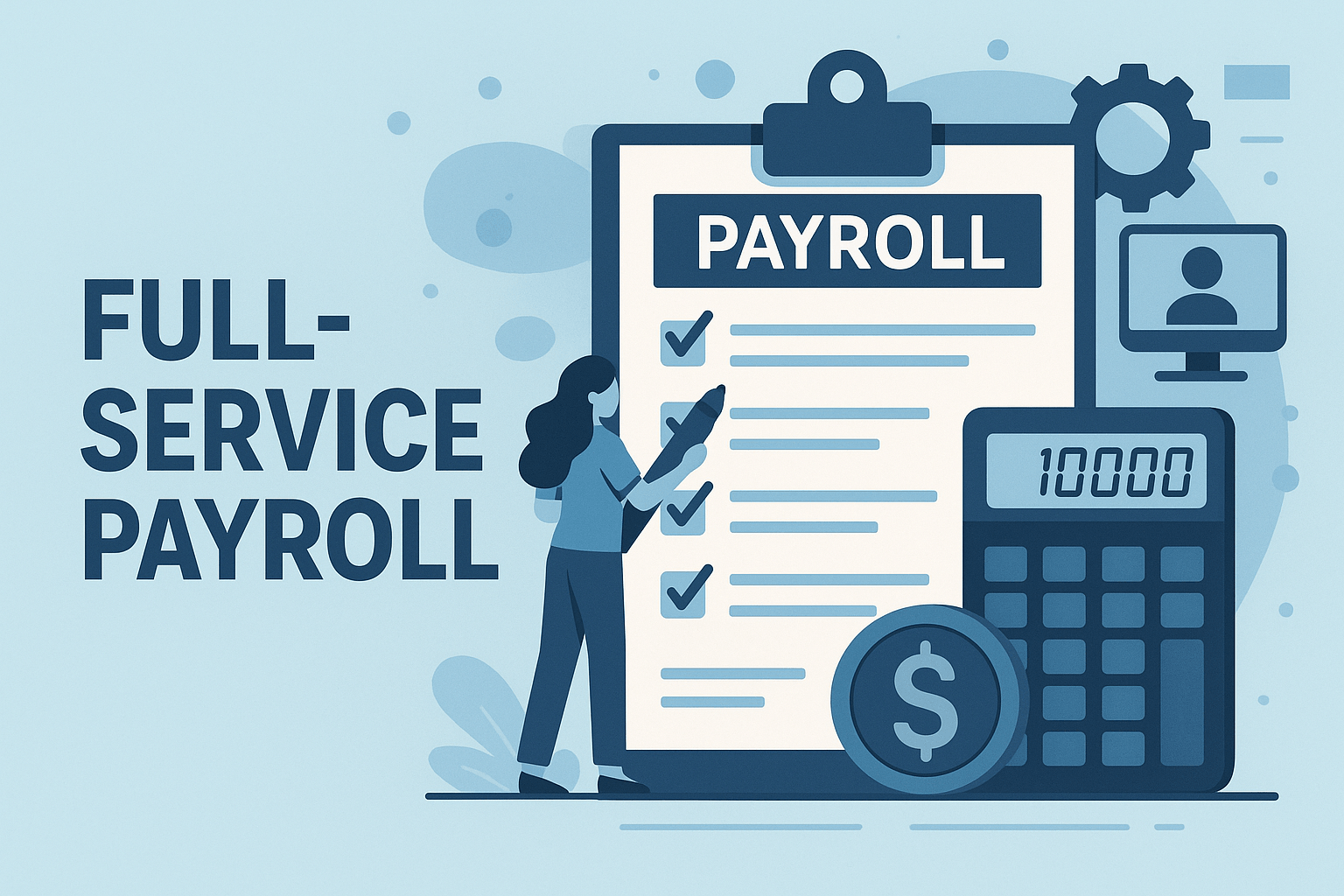DOL Overtime Rule 2024 - How Will It Affect Your Business?
July 19th, 2024
5 min read

Are you tired of constantly struggling to understand and comply with new labor regulations? Do you feel overwhelmed by the complexities of managing payroll and ensuring your business meets all legal requirements? You're not alone. Many business owners face these challenges, especially when new rules, like the DOL Overtime Rule 2024, come into play.
At Lift HCM, we specialize in Human Capital Management and have extensive experience navigating complex labor laws and regulations. Our team has helped numerous businesses adapt to changes in overtime rules, ensuring compliance while optimizing their workforce strategies. With our deep understanding of the DOL regulations and years of expertise, we are well-equipped to guide you through these changes and help you effectively manage their impact on your business.
In this article, you'll learn about the 2024 DOL Overtime Rule changes, how they will affect your business, and practical steps to ensure compliance.
Table of Contents
- 2024 DOL Overtime Rule Changes-A Detailed Overview
- Financial and Operational Implications the DOL Rule Has On Businesses
- Steps to Ensure Compliance
- Is Your Business Fully Compliant with the DOL Rule?
2024 DOL Overtime Rule Changes-A Detailed Overview
On April 23, 2024, the U.S. Department of Labor (DOL) announced a final rule to increase the minimum salary level for the FLSA EAP or "white collar" exemptions. The DOL overtime rule aims to update the salary threshold for exempt employees under the Fair Labor Standards Act (FLSA). This means that employees earning below a certain salary level will be entitled to overtime pay, regardless of their job duties. The goal is to ensure fair compensation for workers who work long hours.
The final rule increases the minimum salary level in two steps:
- On July 1, the minimum salary level increases from $684 to $844 per week (or from $35,568 per year to $43,888 per year).
- On January 1, 2025, the minimum salary level increases from $844 to $1,128 per week (or from $43,888 per year to $58,656 per year).
Before the final rule, the DOL last updated the EAP exemption regulations in 2019. That update set the standard salary level test at $684 per week (or $35,568 per year). These earnings thresholds have been in effect since January 1, 2020.
Highly Compensated Employee (HCE) Requirements Increase
The final rule increases the salary requirement for highly compensated employees (HCEs) from $107,432 to $132,964 per year on July 1 and from $132,964 to $151,164 per year on January 1, 2025. The HCE level will also be adjusted every three years.
As part of an exempt HCE's annual compensation, the employee must receive at least the new standard salary amount of $844 per week on a salary or fee basis on July 1. This threshold increases to $1,128 on January 1, 2025.
Salary Level Updates
The final rule also requires the salary level to be updated every three years, ensuring that the thresholds align with economic conditions and wage growth. Specifically, the salary level will be updated to match the 35th percentile of weekly earnings of full-time salaried workers in the lowest-wage Census Region. This means that on July 1, 2027, the salary level will be updated.
Below is a breakdown of the salary thresholds in weekly, biweekly, semimonthly, monthly, and annual amounts. The smallest time period to calculate the threshold remains on a weekly basis.
|
EAP Threshold |
As of July 1, 2024 |
As of January 1, 2025 |
|
Weekly |
$844 |
$1,128 |
|
Biweekly |
$1,688 |
$2,256 |
|
Semimonthly |
$1,828.67 |
$2,444 |
|
Monthly |
$3,657.33 |
$4,888 |
|
Annual |
$43,888 |
$58,656 |
The minimum salary for certain white-collar workers to be exempt from overtime will increase in two stages. The first increase happened on July 1, 2024. There will be another increase on January 1, 2025. These changes are based on updated methods for calculating salary thresholds. In the future, the minimum salary will be automatically adjusted every three years to reflect current wage data. These scheduled increases are displayed below.
| Date | Standard Salary Level | HCE Total Annual Compensation Threshold |
|
Before July 1, 2024 |
$684/week (equivalent to $35,568/year) |
$107,432/year, including at least $684/week paid on a salary or fee basis |
|
July 1, 2024 |
$844/week (equivalent to $43,888/year) |
$132,964/year, including at least $844/week paid on a salary or fee basis |
|
January 1, 2025 |
$1,128/week (equivalent to $58,656/year) |
$151,164/year, including at least $1,128/week paid on a salary or fee basis |
|
July 1, 2027, and every 3 years thereafter |
To be determined by applying to available data the methodology used to set the salary level in effect at the time of the update. |
To be determined by applying to available data the methodology used to set the salary level in effect at the time of the update |
Financial and Operational Implications the DOL Rule Has On Businesses
Financial Implications
The DOL Overtime Rule 2024 will likely have significant financial implications for small- to medium-sized enterprises. Here are some key points to consider:
- Increased Payroll Costs: With the higher salary threshold, many employees who were previously exempt from overtime will now qualify, leading to increased payroll costs. Businesses must budget for these additional expenses or consider raising salaries to maintain exempt status for certain employees.
- Administrative Burden: Managing the transition to the new overtime rules will require additional administrative effort. This includes reviewing employee classifications, updating payroll systems, and ensuring accurate time tracking for newly eligible employees.
- Potential for Increased Overtime: Employees who become eligible for overtime may work more hours, leading to higher overtime payments. Businesses will need to monitor and manage overtime to control costs effectively.
- Reclassification Costs: Reclassifying employees from exempt to non-exempt status may include updating job descriptions, providing additional training, and adjusting work schedules.
Required Operational Changes
To comply with the DOL Overtime Rule 2024, businesses will need to implement several operational changes:
- Review Exempt Staff: Analyze your exempt employees' job duties, locations, and salaries to understand how the changes might affect them.
- Consult Legal Experts: Discuss the new rule's impact on your company with your legal team, including potential state compliance concerns.
- Plan for Adjustments: If many exempt employees become non-exempt, develop a strategy for managing the change, including training and communication plans.
Steps to Ensure Compliance
- Conduct an Employee Classification Audit: Review all employees currently classified as exempt to determine if their salaries meet the new threshold. Identify employees who need to be reclassified as non-exempt.
- Adjust Salaries if Necessary: For employees whose salaries are close to the new threshold, consider whether it is more cost-effective to raise their wages to maintain their exempt status or to reclassify them as non-exempt and pay overtime.
- Update Job Descriptions: Ensure that job descriptions accurately reflect the duties of each position, particularly for roles that are being reclassified. This will help determine the correct classification and defend it if challenged.
- Update Payroll Systems: Ensure that payroll systems can accurately track and calculate overtime pay for newly eligible employees. This may involve software updates or changes to payroll processing procedures.
- Implement Time Tracking Systems: For newly non-exempt employees, implement reliable time tracking systems to ensure accurate recording of hours worked. This can be done through time clocks, digital time-tracking apps, or other reliable methods.
- Train Managers and HR Personnel: Educate managers and HR staff on the new overtime rules, correctly classifying employees, and managing and approving overtime. Training should also cover how to communicate changes to employees.
- Communicate Changes to Employees: Clearly communicate any changes in classification, salary adjustments, or time tracking requirements to affected employees. Transparency will help in managing employee expectations and maintaining morale.
- Monitor and Control Overtime: Establish clear policies for approving and managing overtime to control costs. This includes limiting the number of overtime hours that can be worked and requiring managerial approval.
- Optimize Workforce Scheduling: Review and adjust work schedules to minimize the need for overtime. This might involve redistributing workloads or hiring part-time or temporary staff to cover peak periods without incurring overtime costs.
- Increase Automation: Implement automation tools and technologies to reduce the amount of manual labor required. This can decrease the number of hours employees need to work, thus reducing overtime.
- Implement a Compensation Strategy: Consider implementing a compensation strategy that includes salary increases for employees near the new threshold to maintain their exempt status. This can be balanced against the cost of paying overtime.
- Review Benefits Packages: Evaluate and adjust benefits packages to ensure they are competitive and attractive. Non-monetary benefits can sometimes compensate for overtime eligibility changes, helping maintain employee satisfaction and retention.
Is Your Business Fully Compliant with the DOL Rule?
The DOL Overtime Rule 2024 brings significant changes to labor regulations, impacting businesses of all sizes. It is crucial for employers to understand the new salary thresholds, adjust their operations accordingly, and ensure compliance to avoid financial and operational challenges.
By conducting employee classification audits, adjusting salaries if necessary, updating job descriptions, and implementing time-tracking systems, businesses can navigate this transition smoothly. Stay proactive, seek guidance from industry experts, and communicate effectively with your employees to ensure compliance and long-term success.
Communicate Changes to Employees:Clearly communicate any changes in classification, salary adjustments, or time tracking requirements to affected employees. Transparency will help in managing employee expectations and maintaining morale.Monitor and Control Overtime: Establish clear policies for approving and managing overtime to control costs. This includes limiting the number of overtime hours that can be worked and requiring managerial approval.
Caitlin Kapolas is a results-driven professional with a strong background in account management and retail. She is dedicated to improving client experiences and building lasting relationships. Caitlin excels in identifying client needs, resolving issues, and implementing customized solutions that drive value. Her effective communication skills ensure high client satisfaction and loyalty, making her a trusted advisor and partner in meeting client needs with precision and professionalism.



.png?width=1536&height=1024&name=Create%20a%20background%20that%20reads%2c%20How%20Long%20to%20Keep%20P%20(1).png)


















